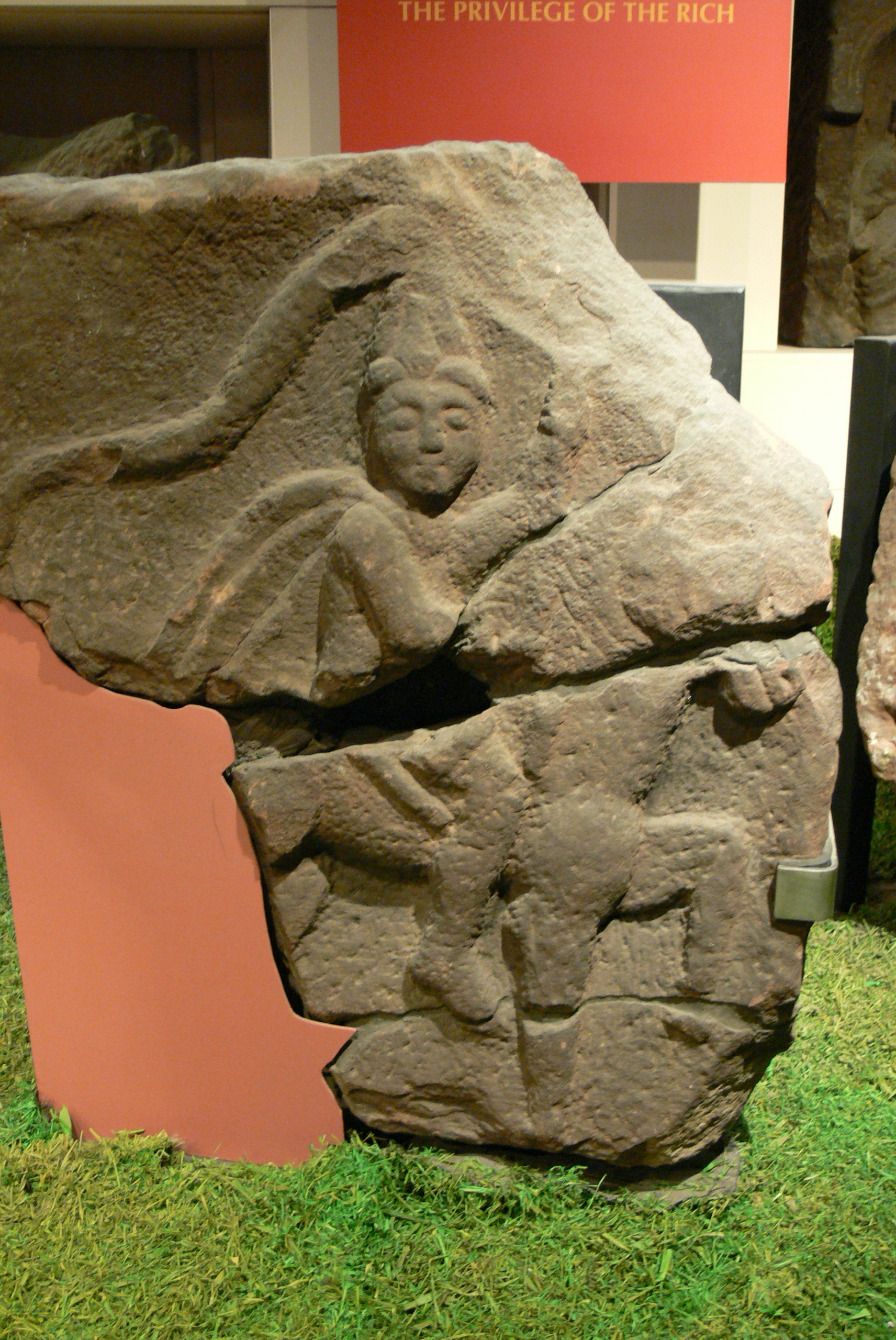The wife of king Artaxias Aruand of Armenia was Satenik, the Alan princess.
As mentioned in my post on him, he fought a war against the Alan tribes that had invaded the eastern regions of Armenia, such as Sakashen.
Moses of Chorene recorded the affair Satenik had with a nobleman known only as Argavan who he said was a Dragon.
It seems that Argavan bears an Iranian name.
Amoung the ancient Steppe Iranians, such as the Alans, it was normal for the standard of the cavalry to be in the shape of a beast.This would be made from bronze and the mouth would be hollow. To the back of the head was attached a long fabric, made of cotton or even silk and sock-like.
During the cavalry charge, the rush of wind would play on the cuttings of the bronze teeth, and the force of wind coming out the end of the sock made a "howling noise". If dozens of standard bearers were in action like this, the effect on those attacked would be unsettling to say the least.
The Sarmatians were akin to the Alan people and may have been one and the same. Such peoples were a state, ruled by an upper class. It was they that gave the name to a nation, and foreign writers such as the Greeks and Romans, would refer to the entire people under the rule of this class as one and the same as them. The Parthians are now thought to have been a heterogenous grouping of tribes, even including Mongolian types in that far back era.
The Roman historian Ammianus Marcellinus, writing around 378 AD, stated that the Alan men were "...tall and good looking, their hair is generally blond and their eyes are frighteningly fierce."
It seems that the Steppe Iranians had long been associated with this "Dragon" ever since they moved into the Iranian plateu and the Caucasus. King Azhdahak of the Medes, who ruled around 550 BC, was refered to as a "Dragon." And even Satenik's son, Artavasdes, was accursed as being a "Dragon" and taken by "Dragons" upon mount Azat-Massis to live for eternity within it.
Regarding "Dragons" on this mountain, they may symbolise the earth tremors that still rack it, or they may refer to that area being settled by Steppe Iranians, as far back as 550 BC when king Azhdahak's enslaved people were said to have been settled there by the victorious king Tigran in the legend by Moses of Chorene.
Regarding Satenik, Argavan and Artavasdes, it is safe to say that "Dragon" refers to them being Alan or of Alan parentage.
As mentioned in my post on him, he fought a war against the Alan tribes that had invaded the eastern regions of Armenia, such as Sakashen.
Moses of Chorene recorded the affair Satenik had with a nobleman known only as Argavan who he said was a Dragon.
It seems that Argavan bears an Iranian name.
Amoung the ancient Steppe Iranians, such as the Alans, it was normal for the standard of the cavalry to be in the shape of a beast.This would be made from bronze and the mouth would be hollow. To the back of the head was attached a long fabric, made of cotton or even silk and sock-like.
 |
| Dacian cavalry standard from Trajan's Column |
During the cavalry charge, the rush of wind would play on the cuttings of the bronze teeth, and the force of wind coming out the end of the sock made a "howling noise". If dozens of standard bearers were in action like this, the effect on those attacked would be unsettling to say the least.
 | |
| Sarmatian cavalryman, a relief found on the north wall of Chester Roman fort, England. |
The Roman historian Ammianus Marcellinus, writing around 378 AD, stated that the Alan men were "...tall and good looking, their hair is generally blond and their eyes are frighteningly fierce."
It seems that the Steppe Iranians had long been associated with this "Dragon" ever since they moved into the Iranian plateu and the Caucasus. King Azhdahak of the Medes, who ruled around 550 BC, was refered to as a "Dragon." And even Satenik's son, Artavasdes, was accursed as being a "Dragon" and taken by "Dragons" upon mount Azat-Massis to live for eternity within it.
Regarding "Dragons" on this mountain, they may symbolise the earth tremors that still rack it, or they may refer to that area being settled by Steppe Iranians, as far back as 550 BC when king Azhdahak's enslaved people were said to have been settled there by the victorious king Tigran in the legend by Moses of Chorene.
Regarding Satenik, Argavan and Artavasdes, it is safe to say that "Dragon" refers to them being Alan or of Alan parentage.
